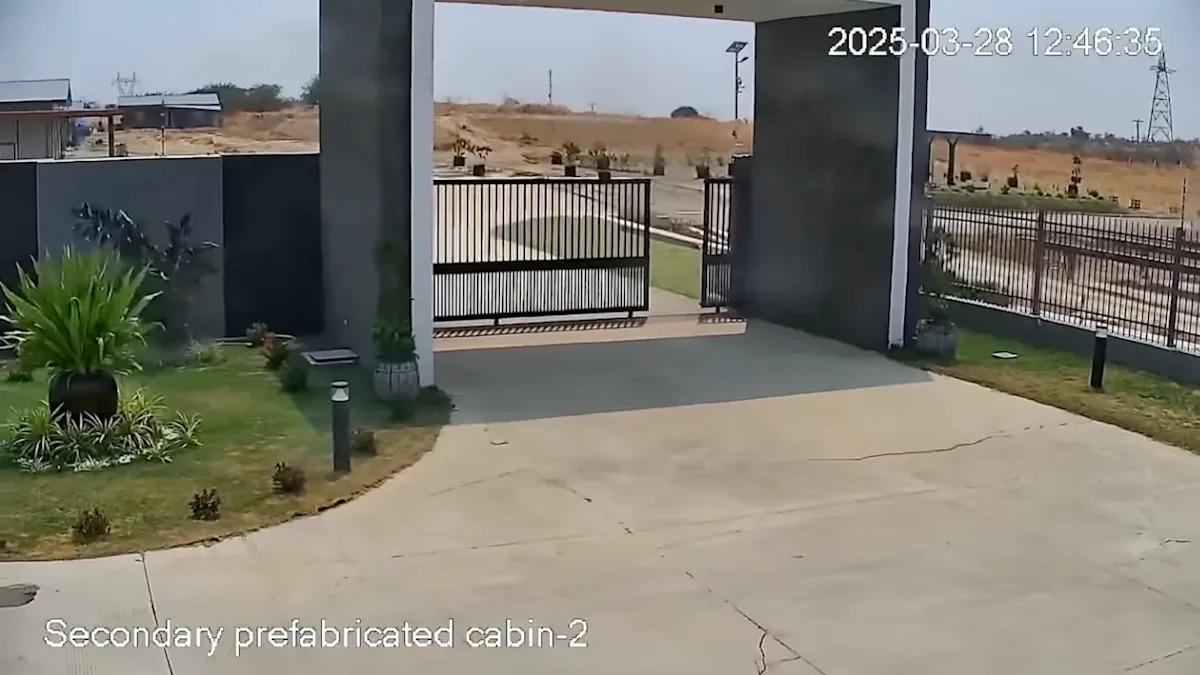Earthquakes are violent events that alter the face of the planet. In many cases, those changes occur beneath the surface and only gradually become visible over thousands of years. Occasionally, however, an earthquake’s effects aren’t just felt—they’re seen. It’s even rarer to actually capture one of those moments on camera, but according to seismologists at Japan’s Kyoto University, the footage highlights the first-known video of a strike-slip fault. Their analysis, published in The Seismic Record, has led to new findings based on real-time visual evidence of tectonic motion.
The magnitude 7.7 event took place on March 28 along the Sagaing Fault with an epicenter near Myanmar’s second-largest city, Mandalay. Although the initial rupture process lasted barely 80 seconds, it and numerous aftershocks were ultimately responsible for 5,456 confirmed deaths and over 11,000 injuries. Later evaluations indicated the quake was the second deadliest in modern history, as well as the most powerful to hit Myanmar in over a century. According to a separate group’s paper published in the same journal, the southern portion of the rupture occurred at an astonishing 3.7 miles per second—fast enough to qualify as “supershear velocity.”
Amid the catastrophe, an outdoor CCTV camera about 74.5 miles south of the epicenter recorded a visceral illustration of its power. Over just a few moments, what at first looks like a single chunk of the ground appears to suddenly divide and horizontally shift past one another in opposite directions. Completely by accident, the camera recorded a direct look of a strike-slip fault, something previously analyzed by remote seismic instruments. To researchers at Kyoto University, the clip wasn’t just a jaw-dropping scene—it was an opportunity to study a strike-slip fault using visual data.
“We did not anticipate that this video record would provide such a rich variety of detailed observations,” corresponding author and geologist Jesse Kearse said in a statement. “Such kinematic data is critical for advancing our understanding of earthquake source physics.”
Kearse and colleagues utilized a technique called pixel cross-correlation to analyze the fault movement on a frame-by-frame basis. Their findings showed the fault slipped horizontally by 8.2 feet in only 1.3 seconds, with a maximum speed of about 10.5 feet per second. While the movement matched experts’ existing knowledge of strike-slip ruptures, the short duration and speed were new developments.
“The brief duration of motion confirms a pulse-like rupture, characterized by a concentrated burst of slip propagating along the fault, much like a ripple traveling down a rug when flicked from one end,” Kearse explained.
Additional examinations also proved that the slip path was slightly curved, confirming previous observations recorded elsewhere in the world. This means subtly curving strike-slips instead of totally linear ones may be the rule, not the exception.
“Overall, these observations establish a new benchmark for understanding dynamic rupture processes,” the study’s authors wrote, adding that the video offers real-time confirmation of curved slip paths while helping “deepen our understanding of the physical mechanisms that control rapid fault slip during large earthquakes.”
Such discoveries may also help seismologists, geologists, and urban planners design more resilient architecture to ensure that when major earthquakes inevitably occur, their damage is minimized as much as possible.
